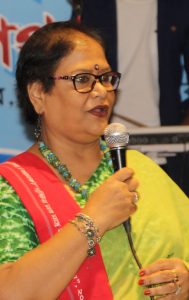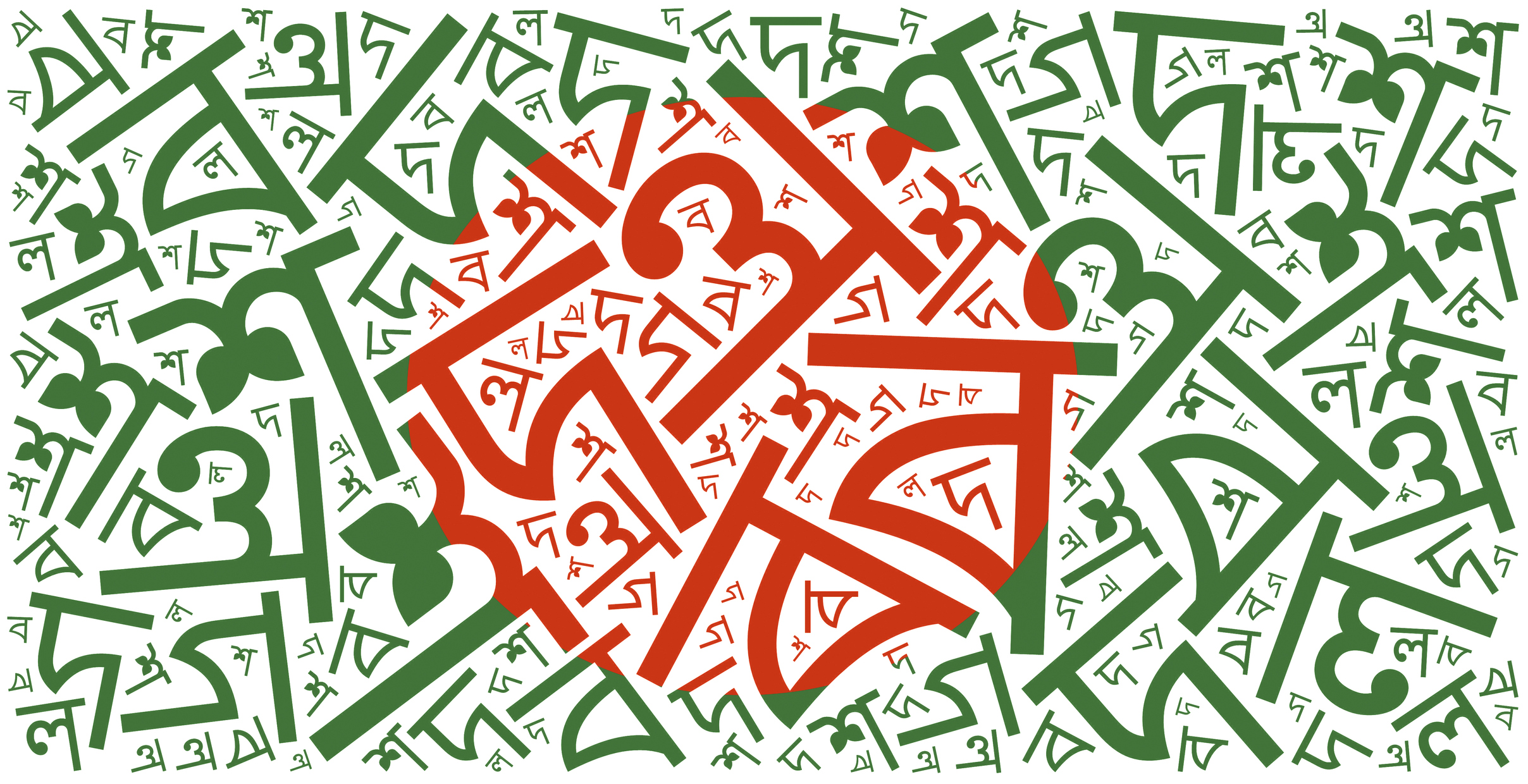
As calls are made in the UK for greater protection of women against sexual harassment and violence, LSE Professor Katy Gardner speaks to renowned feminist and human rights activist Sheepa Hafiza about campaigns for gender justice in Bangladesh. Having worked for many years at BRAC, and as the former Executive Director of Ain o Shalish Kendra (ASK), Sheepa Hafiza has been at the centre of many of these struggles.
Katy: One of your achievements was to introduce the analysis and awareness of gender issues to BRAC. How did this begin?
Sheepa: When I joined BRAC in the 1990s no one ever said ‘her’ or ‘she’, only ‘he’. People used to laugh at me for adding ‘and she’! ‘Gender’ was a foreign word. But after doing gender awareness and analysis training — probably the first in the country for staff and leaders within an organisation rather than in the communities where we worked — we started to hold workshops and develop BRAC’s Gender Quality Action Learning programme. All this helped us to become more responsive to the issues that women faced at work and to develop gender policies. For example, we started a menstruation support policy for women working in the field. We changed the timings of meetings with local officials because we realised that women were regularly missing their lunch when they went into town as there were no restaurants for them to go there.
Katy: Tell me about your work tackling sexual harassment.
Sheepa: After hearing stories from colleagues, and from a study we did with slum children, my eyes were opened and I became committed to fighting sexual harassment. By 2003 we had developed a sexual harassment elimination policy within BRAC — SHE. But policies can’t stand alone so we also developed a redressal system, and a unit for redress complaint management. We realised that we had to build capacity at all levels. In 2004, the Bangladesh National Women Lawyers Association (BNWLA) were working on a case involving the sexual harassment of a university student. They asked me to share BRAC’s SHE policy because at that time there was no existing national legislation on sexual harassment. That helped lead to the 2009 High Court ruling that every educational institution had to have a committee to address sexual harassment.
Katy: Do you think this ruling has led to actual changes?
Sheepa: The work we did at BRAC certainly led to changes in attitudes and practices. We often had discussions  about these issues, and sexual harassment was regularly on the agenda in meetings at the Head Office and BRAC field offices. We also dealt professionally with any complaints that were made. Overall, I do think we managed to improve relationships between men and women internally. But although the 2009 ruling gave us a platform, it wasn’t as effective as we would have liked because apart from organisations like BRAC very few other institutions actually followed it. In 2019, after the brutal murder of Nusrat Jahan, who had complained of sexual harassment by her teacher at school, the government re-issued the directive and many Ministries and institutions created sexual harassment redressal units. I’ve had the opportunity to attend lots of these committees but, to be honest, they lack a basic understanding of sexual harassment. They don’t see it as a human rights issue. You have to build attitudes, capacity and support groups. And in general that didn’t get done. Also, there was a lack of qualified investigators for harassment complaints, and no monitoring mechanisms. The legislation isn’t comprehensive, so it basically isn’t effective.
about these issues, and sexual harassment was regularly on the agenda in meetings at the Head Office and BRAC field offices. We also dealt professionally with any complaints that were made. Overall, I do think we managed to improve relationships between men and women internally. But although the 2009 ruling gave us a platform, it wasn’t as effective as we would have liked because apart from organisations like BRAC very few other institutions actually followed it. In 2019, after the brutal murder of Nusrat Jahan, who had complained of sexual harassment by her teacher at school, the government re-issued the directive and many Ministries and institutions created sexual harassment redressal units. I’ve had the opportunity to attend lots of these committees but, to be honest, they lack a basic understanding of sexual harassment. They don’t see it as a human rights issue. You have to build attitudes, capacity and support groups. And in general that didn’t get done. Also, there was a lack of qualified investigators for harassment complaints, and no monitoring mechanisms. The legislation isn’t comprehensive, so it basically isn’t effective.
Katy: What would make it more effective?
Sheepa: When BRAC started addressing sexual harassment it created the space for discussion and dialogue. And there was a strong will for change. Knowing what sexual harassment is, why it takes place, how it could be prevented, and how everyone has the right to have a life free from sexual assault is so important. But alongside that you also need trusted systems for prevention and protection. For example at BRAC we developed Bangladesh’s first interactive app with counselling and referral support where anyone can raise concerns or complaints. We reached 1.8 million women, girls, men, and boys within the first one-and-a-half years of launching it. Because of what we’d achieved at BRAC, I started getting requests from different organisations (government, businesses, INGOs, etc) for help but you can’t help staff in an organisation without the political will in place.
Katy: I also wanted to ask you about the ‘Girls Not Brides’ campaign?
Sheepa: In 2009, child marriage was something we wanted to tackle at BRAC alongside other Bangladeshi organisations like Mahila Parishad. In 2012, I and some other representatives from Bangladesh attended a meeting in Delhi where we saw a presentation from the organisation Girls Not Brides. When we got back to Bangladesh, we developed a national network. The campaign was very vibrant nationally and globally.
Katy: So how did the controversial 2017 Child Marriage Restraint Act come about?
Sheepa: The Law Ministry started a review of the existing 1929 Child Marriage Restraint Act and decided to lower the age of marriage from 18 to 16. There was a big push-back from civil society and the media. We met with government representatives and got an assurance that the age wouldn’t go under 18. It was a big fight. In the new law (the 2017 Child Marriage Restraint Act) the legal age for marriage is indeed 18, but to our surprise they added a clause in which girls under 18 can get married with the consent of their parents and the court. Who goes to court to get consent for marriage? In Bangladesh less than 3% of women file complaints with the police against rape or harassment. It takes years to get a judgement. People hesitate to go to court even for murder! So what the clause basically did was legitimise underage marriage. It was a watershed moment which I think led to an increase in the rape and abuse of underage girls. For example, a Member of Parliament was on TV saying that when a girl gets sexually abused for her safety’s sake she should be married off to the perpetrator. The policy made people think that if a man wants to marry a girl all he has to do is abuse her.
Katy: As you say, even though the legal age of marriage is now 18 the law can be used against girls and young women and implicitly encourages sexual abuse, which is so frustrating. In spite of these set-backs, what do you think have been the main achievements of Bangladeshi feminism over the last generation?
Sheepa: A lot of things spring to mind! For a start, concepts like women’s agency, patriarchy, discrimination and subordination are no longer taboo for younger women to talk about. Even some men talk in these terms today. They’re still not the majority, but people from all backgrounds are raising their voices and taking the movement forward. In terms of the state, Bangladesh has a good number of high standard acts and national action plans which support women’s empowerment. The ratio of girls in schools is higher than boys, and we are fighting for quality education that empower students and sensitise boys and men. There are also more women in public positions and services.
Katy: So there’s lots to celebrate, as well as the set-backs. Given the struggles of Bangladeshi feminists against gender violence, how do you feel when you see women in the UK fighting similar battles, as has been in the British media recently in the aftermath of the Sarah Everard case? Do you think the issues that Bangladeshi women face are the same?
Sheepa: I thought the UK was an advanced country with highly effective, long-standing safeguarding policies, but unfortunately it doesn’t seem to be so in this case. The good thing is that many thousands of people are raising their voices to ensure a respectful and secure space for women. We need the people and countries of the world to put things right by respecting and valuing gender equality and eliminating patriarchy.
*
This article gives the views of the interviewer & interviewee, and not the position of the South Asia @ LSE blog, nor the London School of Economics and Political Science.
© Banner image: Sheepa Hafiza advocating for women’s rights to a community in Bangladesh, on a visit with BRAC; used with permission of Sheepa Hafiza.
© Photograph of Sheepa Hafiza, used with permission.
The ‘Bangladesh @ 50’ logo is copyrighted by the LSE South Asia Centre, and may not be used by anyone for any purpose. It shows the national flower of Bangladesh, Water Lily (Nymphaea nouchali), framed in a design adapted from Bangladesh’s dhakai & jamdani textile weaves. The logo has been designed by Oroon Das.
*







